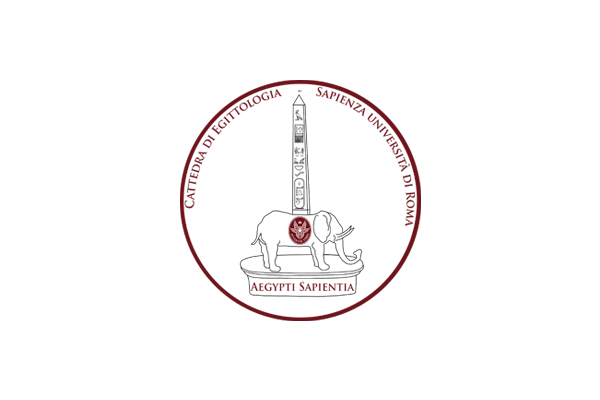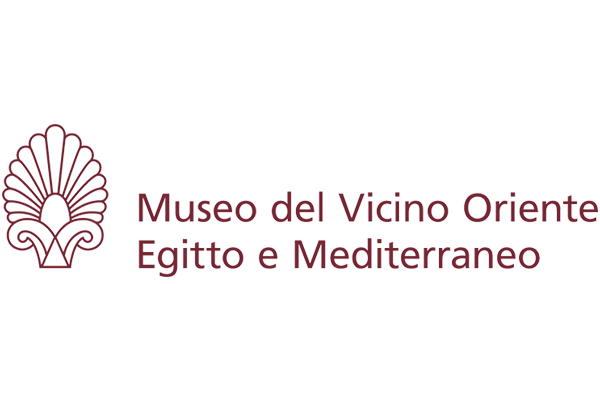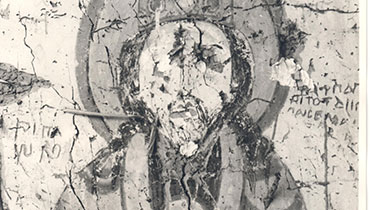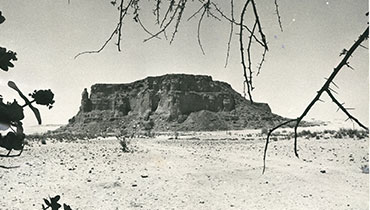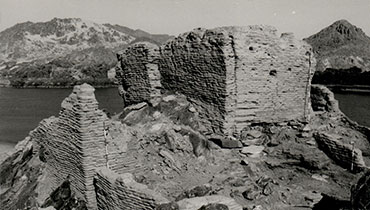Introduction
The Archaeological Activities of Sapienza University of Rome:
An Italian History in the Sudanese Nubia, between Past and Future
The history of the archaeological expeditions conducted in Sudan by Sapienza University of Rome – until the early 1980s, simply called University of Rome, being at that time the only university in the capital of Italy – represents an important part of the history of the Italian commitment to the safeguarding of the Sudanese archaeological heritage and it is closely connected to the well-known rescue campaign of Nubian monumentspromoted by UNESCO on the occasion of the construction of the “Great Dam” of Aswan, which determined the formation of Lake Nasser and the consequent submerging of monuments that were not, at that time being, moved elsewhere.
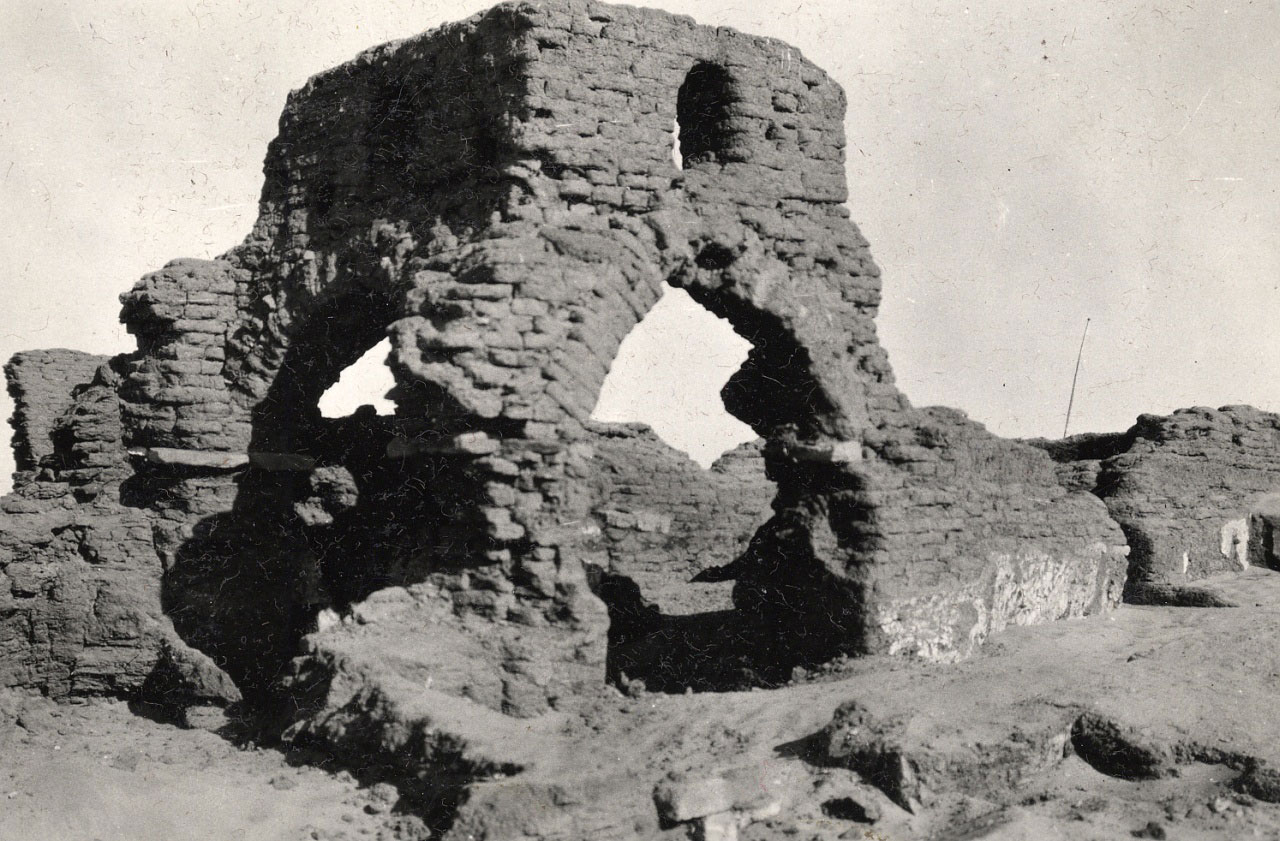
Detail of the conservation of the adobe buildings at Tamit
In order to describe, albeit briefly, these archaeological activities we need to look back over the long, continuous and fruitful collaboration between Italy and Sudan.
This brief virtual exhibition, of archival inspiration, makes use, among the other resources, of documentary materials collected by the protagonists of the expeditions and deposited in part at the Museum of the Near East, Egypt and the Mediterranean (MVOEM) of Sapienza University. It aims to illustrate the results of the “historical” missions of Sapienza to Sudan – in Tamit (1964), Sonqi Tino (1967-1970) and Jebel Barkal (1973-2004), in addition to various other explorations carried out in those same years between the second and fourth cataracts of the Nile –, but at the same time looks to the future of the relations between Sapienza and the National Corporation for Antiquities and Museums (NCAM), two institutions which together, through a joint mission, will work at the Meroitic temple of Hugair Gubli and in the area of Magal (fourth cataract).

Panoramic view of the site of the Diff of Sonqi
The Rescue Campaign of the Nubian Monuments
From 1 to 11 October 1959 the United Nations Educational Scientific and Cultural Organization organized a Meeting of International Experts on the Safeguarding of the Sites and Monuments of Ancient Nubia.
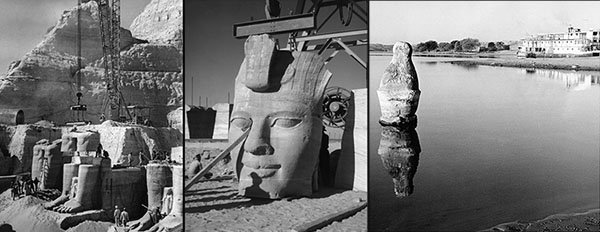
Left and middle: Dismantling of the colossal statues of the Great Temple at Abu Simbel at the time of the campaign for the rescue of the site from the filling of Lake Nasser (©UNESCO/Nenadovic 1966/Vorontzoff 1965). Right: One of the sphinxes of the temple of Ramses II at Wadi es Sebua, threatened by flooding from the building project of the High Dam of Aswan (©UNESCO/Almasy 1960)
Italy was represented by Pietro Gazzola, Professor of Engineering at the Polytechnic of Milan and Superintendent of Monuments of Verona, as an effective member of the team of experts, and by Sergio Donadoni,at the time Director of the archaeological mission of the University of Milan, as an observer. The purpose ofthe meeting was, of course, to draw up a reasoned and timely plan of works to be carried out.
On that occasion, however, and in all the following meetings which characterized the first phase of the Campaign for the rescue of the monuments of Nubia, which only began officially in 1960, less attention was paid, also for logistical reasons, to the Sudanese archaeological sites than to the Egyptian ones.
Finally, from 18 to 22 April 1966, a Réunion international pour le campagne archéologique de Nubie soudanaise was organized in Venice. Italy was once again represented by Sergio Donadoni. At that time, he was Professor of Egyptology at Sapienza and had been director of the archaeological mission in Tamit for two years.
The discussion was chaired by Dr. John Otis Brew, of Harvard University, in the presence of some UNESCO officials and the Director General of Antiquities in Sudan, Dr. Sayed Thabit Hassan.
During the meeting the “need in missions, technicians, materials, funds required for the exploration of the area of Batn el-Hajar (the “stone belly”) compromised by Sadd al-ʿĀlī (“High dam”)” was illustrated, underlining at the same time “the difficulties of working in that area, which, impervious and poor by nature, is now also abandoned by the last residents and reduced to almost a desert”.
It should not be forgotten that, in addition to endangering the archaeological heritage, the rapid filling of the reservoir of Lake Nasser also had dramatic effects on the Nubian population, which in many cases had to abandon their village and resettle elsewhere.
Toward the Excavation in Sonqi (or Sonki) Tino
“An intervention in favour of Sudanese antiquities” – Donadoni commented on April 25, 1966 –, “if it wants to be qualified and not generic, for us Italians, it can basically take the form of two profiles: either by sending technicians to be made available to the missions directed by the Sudanese Antiquities Service (especially restorers) – or with an activity similar to that which was carried out by Italy in Egyptian Nubia (even if, obviously, smaller), that is, by sending an archaeological mission that takes advantage of the experience which has now been gained in Nubian work and which has already given good results.

Autograph letter of Sergio Donadoni to the Italian ambassador Giuseppe Puri Purini (June 29 1966), in which the scholar mentions his participation to the alla Réunion international pour le campagne archéologique de Nubie soudanaise held in Venice in April of the same year, and announces his intention of starting an archaeological project in the endangered region of Batn el-Hajar (Archive MVOEM)
This second activity would be the only one capable of determining the arrival in Italy of Sudanese archaeological material, according to a scheme of equal division of the finds. The Sudanese authorities present at the conference declared that, in the event of our archaeological intervention, they would gladly entrust us with the Diffinarti area and the Sonki West church, rich – it seems – in murals that should be removed”.
It was exactly what happened: in 1967, thanks to a C.N.R. (Italian Centre for National Research) funding, which was joined by a contribution from the Holy See, a first campaign was organized in the area of Batn el Haggar, near the second cataract, and more precisely in the locality of Sonqi Tino or Sonqi West, where – as will be seen later – a small ecclesiastical building was discovered, entirely covered with paintings in excellent condition.

Telegram of P. Giovanni Vantini to Sergio Donadoni (22 February 1967), in which the Comboni missionary confirms the granting of the licence of excavation by Thabit Hassan Thabit, then Director of the Sudanese Antiquities sService, and the possibility of starting the first season of fieldwork in March of that year
These paintings, after having been restored in Florence, in the Uffizi laboratories (integrating the lacunas with a mixture of sand and silt brought from Sudan for this purpose), and exhibited in Rome at the C.N.R. and then in Turin, during museums week, are now preserved partly at the Sudan National Museum at Khartoum and partly at the Museum of the Near East, Egypt and the Mediterranean of the Sapienza University of Rome.
A Close Collaboration between Sapienza, the Sudanese Government and the Holy See
A significant part of the success of the campaign carried out in Sonqi Tino and the subsequent explorations of the surrounding areas – the fortified village named Diff, located about 4 km south of Sonqi, the necropolis and other sites – is due to the synergistic and little known collaboration between the Sudanese authorities, Sapienza and the Holy See, this last represented by Father Giovanni Vantini, a Comboni missionary and expert in Nubian culture, who provided, among other things, the logistics of the mission.
From the intense correspondence between Vantini and Donadoni, precious excerpts of daily life, the close relationships with other missions and, above all, the close collaboration with the then Department of Sudanese Antiquities directed by Sayed Thabit Hassan, have been gathered.
On December 21, 1967, for example, Vantini wrote:
…Here they are already on the spot: the Polish Mission (Old Dongola, December 12), Switzerland (Akasha already excavated, now they are moving to Argos), the French (17 Dec.) For Mirgissa, the UNESCO-SERV. ANT. (Mills & Schoenback) near Semna but then they will move near Ambikol, Schiff Giorgini (from Nov; Prof. Leclant arrived Dec. 19), Madame Hintze returns to Berlin leaving two experts in Musawarat, but Prof. Hintze did not come and it is said that this year will not come (?) Prof. Shinnie will reopen excavation in Meroe town on Jan 1st. 1968 and would like you to visit it (for this purpose I point out that there are trains that stop 4 km from Meroe, and then you could continue to Halfa with the train of the following day)… Here so far a hot December: min. 20 ° - max. 41 ° C, now it seems to be cooling rapidly….
Donadoni replied about a month later, providing a precise picture of the preparations underway in Italy and the restoration of the paintings and at the same time announcing the start of the new mission (the second of 1968) in mid-February:
… I hope that, when we arrive, we will find a few more colleagues to visit, and that we will not be the only ones who dig out of season. In the meantime, give my greetings to all those you will see….
In short, the archaeological missions active in Sudan form a small but cohesive community. The history of field research and concrete scientific results also passes through the relationships of friendship and fellowship.

Autograph letter of P. Giovanni Vantini to Sergio Donadoni (January 31 1968), then Director of Sapienza’s Archaeological Mission at Sonqi Tino, in which the missionary, urged by Donadoni, addresses logistic questions about the planning of the campaign 1968 (Archive MVOEM)
